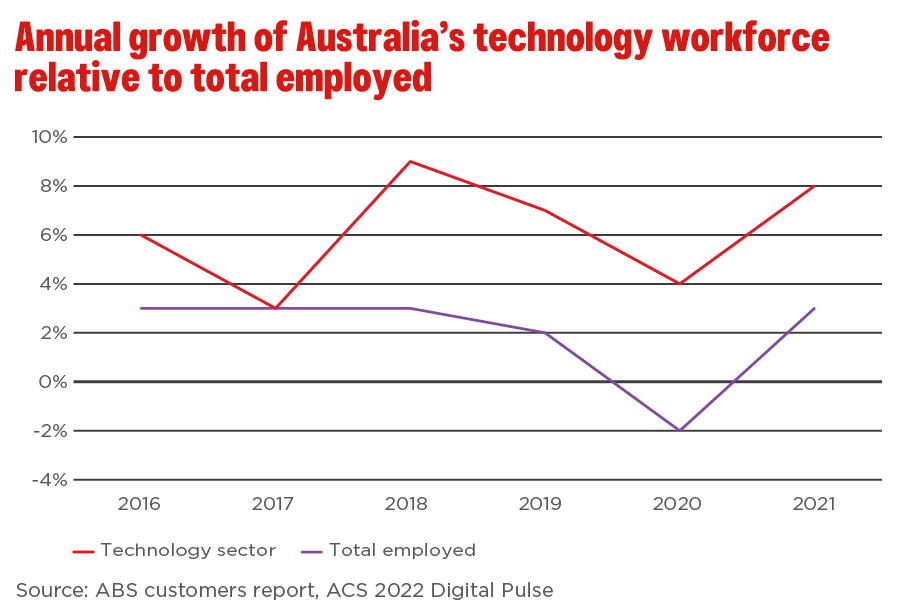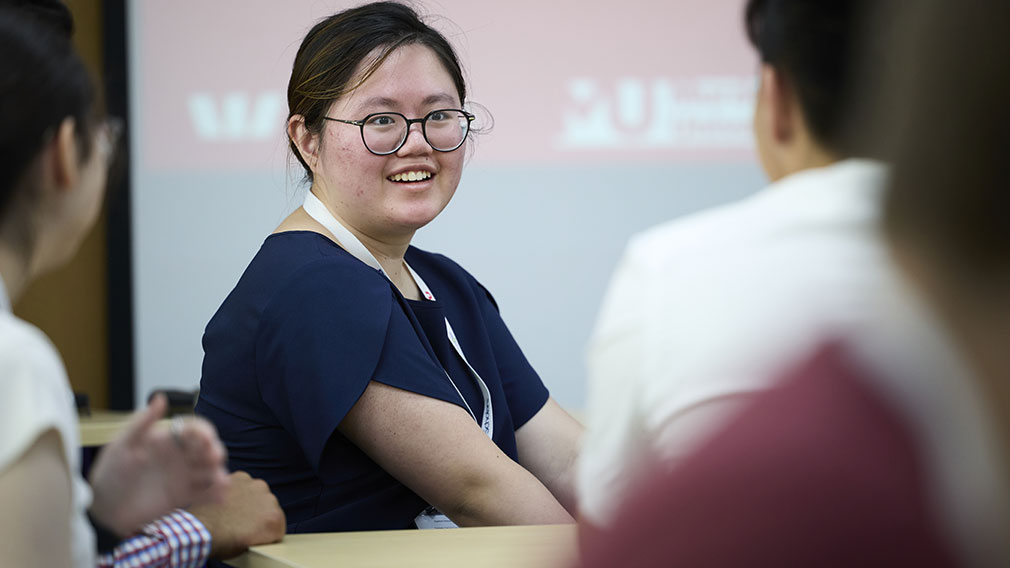Giving women a tech edge needs fresh approach

As demand surges for tech workers, a new technology training initiative at Westpac aims to help more women grab this opportunity, writes Samira Bachir. (Getty)
As the only woman among dozens of students to graduate from my IT degree around 25 years ago, it came as no surprise that I’ve regularly been the sole female technologist in the room throughout my career.
What does surprise me is that despite the leaps in technology and the huge variety of jobs that have emerged in the industry ove the past few decades, not much has changed on the gender balance front.
Women still make up just 31 per cent of Australia’s technology workforce, according to the Australian Computer Society’s Digital Pulse released earlier this year.
This comes at a time when there has never been such a high demand for technology workers.
The ACS reports the technology workforce grew by 8 per cent last year to its highest ever level of more than 870,000 and job ads for tech occupations have risen by 66 per cent compared to pre-pandemic levels. The most recent estimates from the Tech Council of Australia point to the need for an additional 650,000 tech workers by 2030.
It’s a huge opportunity – and it’s currently being tapped by more than three times as many men as women!

This has got me thinking more deeply about what’s driving the imbalance and what I can do to help address it – not just because it’s inequitable, but to ensure a better gender balance to get better technology outcomes.
There’s no doubt it’s complex. But my view is that the key barrier is simply negative perceptions – many of which I’ve found can be easily dispelled.
For example, the way ads for many tech jobs are written is enough to put a lot of women off. Ads tend to be skewed towards a jargon-filled list of technical requirements (many of which can be easily taught on the job) rather than the leadership and communication traits desired, leading a lot of women (who may have more of these skills than male applicants) not to apply for fear of not ticking 100 per cent of the technical boxes.
Similarly, many women who’ve walked a non-technology career path assume they can’t switch to tech, that they have no transferrable skills, that they’d need to go back to university to study IT, or they’d need to take a backward career step to make the leap.
But in so many cases, this is simply not true.
While inevitably there are tech roles that require deep specialist technical skills and experience, there are many others which are crying out for people who are good communicators, project managers, collaborators or team leaders, who can pick up the technical skills on the job.
So how do we change these perceptions?
Again, there are many moving parts. But as I’ve talked to more technology leaders including those in the ‘women in technology’ employee action group at Westpac where I work, I’ve found the key to help pique the interest – and bolster the confidence – of more women may just lie in building awareness.
We put this theory to the test at Westpac, around one year ago organising a simple event to which we invited women employees to hear from senior women tech leaders about their careers and how they’ve succeeded.
To my surprise, more than 360 people attended, proving to us that despite the slow pace of growth in women in tech roles, there was a hunger across the bank – not only in its technology division – to find ways in.
And what became clearest of all was the desire for women to coach other women.
That sparked the idea for us to work with the bank’s key technology partners – initially Microsoft – to create a bespoke tech training program. Women from across the bank were invited to participate and become certified in various areas, including Azure Cloud, cyber security and data science.
What makes this training special is that it’s designed, delivered and attended by women.
And I believe that’s the reason it’s attracted higher than expected participants – more than 460 attendees since the first training session in April, each of whom we expect to attain certification by year’s end. We’re now planning to roll the program into next year.
While the training’s technical aspects and certification are incredibly useful to participants, in my view the most valuable outcomes are that it’s changing perceptions and opening career doors. To bolster this, we kick off each training session with a talk by a senior tech woman and outline all relevant open job opportunities.
Although it’s still early days, I already know of a handful of program participants who’ve said the training has given them the skills and confidence to apply (successfully) for a technology job – boding well for future cohorts.
While it’s a simple idea, this training is helping more women realise that once you fill in the gap of technical training, you don’t have to take a backward career step to leap into tech. If you have the will and the passion, anyone can do it.
My hope is that with more ideas like this, we can keep shifting the dial so it’s no longer normal for me to be the only woman technologist in the room.



